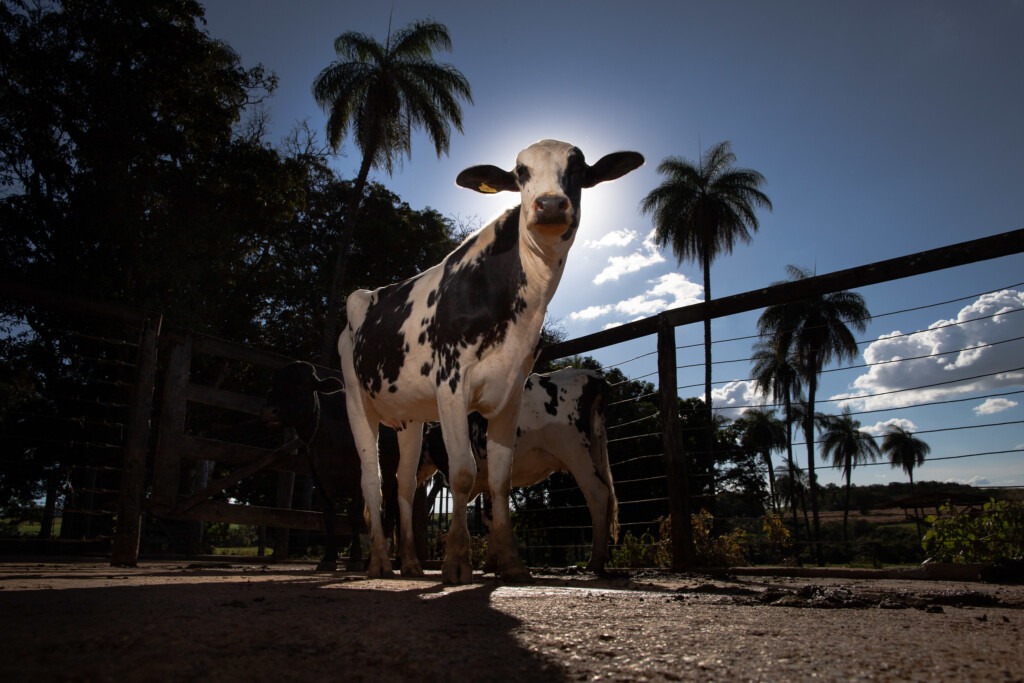Brazil is one of the world’s largest beef producers and exporters. In 2020, the country was the largest exporter of meat in the world, with 2.2 million tons – 14.4% of the international market. It has one of the largest and most sustainable cattle herds in the world, counting 218.2m heads of cattle (2020).
Brazilian cattle production has benefited immensely from the technological advances of the past decades, both in pasture management and diversification, as well as in animal breeding and genetic selection.
The cattle enjoy good nutrition thanks to the wide availability of open pasture lands as well as locally produced grains. The different breeds of cattle have been carefully selected and cross-bred to and thrive in the local tropical conditions.
Healthy cattle, fully traceable

Excellent healthcare such as regular vaccination and parasites control is critical. Brazil has eradicated foot-and-mouth disease (FMD), the result is sanitary safety and hormone-free, high-quality beef that is exported to 154 countries across the globe.
Today compliance with quality requirements is monitored using a dedicated platform, AgriTrace. It oversees traceability procedures and gives international traders transparency and additional quality information to the sanitary guarantees already offered by the Brazilian government.
Originating from the Brazilian Traceability Law, AgriTrace registers the requirements by Brazil’s export markets and verifies exporters’ regulatory compliance using data about rural properties and traffic of animals.
Each producer must adhere to the rules which ensures that only meat that complies with the requirements is exported. Compliance is regularly checked by independent inspectors who use live data, geographic coordinates, photos, videos and audios, as well as 24-hour self-monitoring.
In addition, over 4,700 local agricultural health offices are responsible for the regular update of farms’ registration, proper documentation and timely vaccination. Buyers of Brazilian beef can trace its origin using individual information about the producer.
Sustainable beef production
Thanks to its focus on innovation and efficiency, Brazil has been able to expand beef production massively, while at the same time actually reducing the area of land used to pasture cattle. In the past 47 years beef productivity rose by 146%, from 1,63 kg/ha/year in 1990 to 4.01 kg/ha/year in 2017. At the same time, the area on which beef cattle are pastured was brought down by 13%. That trend is set to continue: total pasture area is decreasing by an average of 2m ha per year, while the annual cattle herd growth is 3% per year.
But that efficiency has not been achieved at the cost of implementing intensive indoor farming practices – Brazilian cattle typically pasture outdoors year-round until a few months before slaughter, and almost 90% of all Brazilian beef is grass fed.
Notably, the extension of integrated crop-livestock-forestry (ICLF) systems, where livestock is raised in harmony with forests and pasturing is alternated with crop-growing, has been a key driver in more efficient land use.
The natural fertilization from livestock brings more nutrients to the soil which in turn improves the quality of pastures and animals’ nutrition. Farmers may also use parts of the land for forests which creates better thermal comfort for the animals, improving their welfare. By 2030 Brazil will extend the ICLF system to a total 16.5m ha of farmland.
Any growth will continue to be complemented by Brazil’s schemes against deforestation, forest regeneration and the replanting of 150,000km2 of Amazon forest under the Biomass Project managed by CNA and The Brazilian Agricultural Research Corporation (Embrapa).